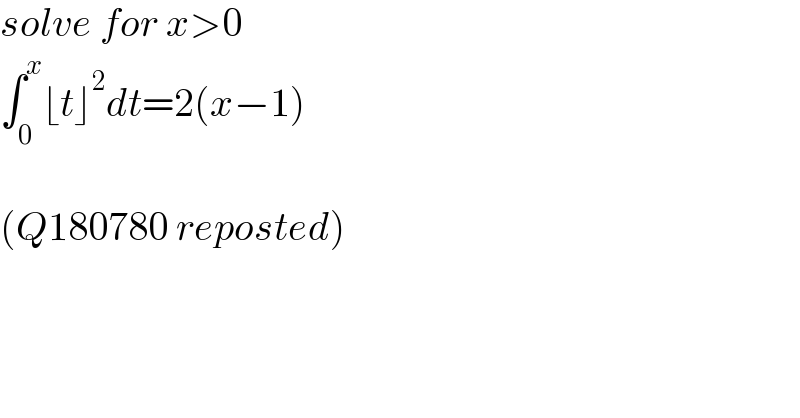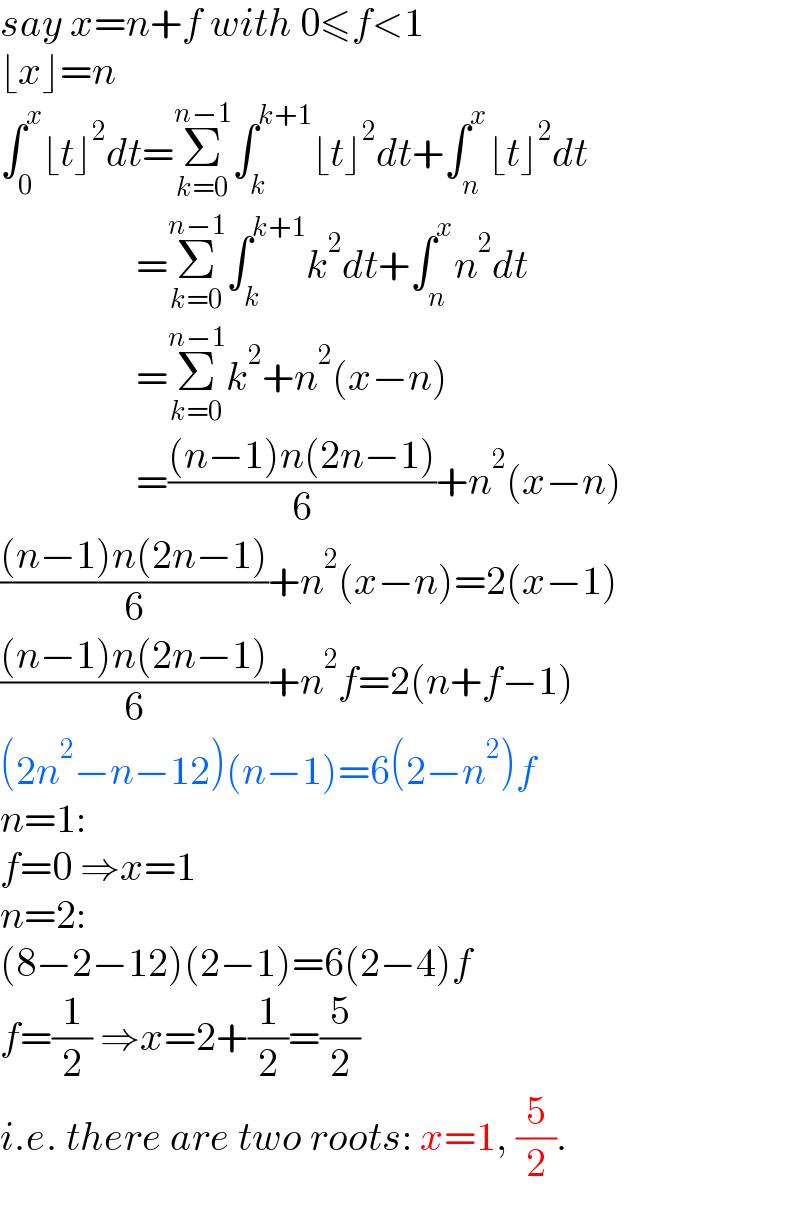
Question and Answers Forum
Question Number 181020 by mr W last updated on 20/Nov/22

Answered by mr W last updated on 20/Nov/22

| ||
Question and Answers Forum | ||
Question Number 181020 by mr W last updated on 20/Nov/22 | ||
 | ||
Answered by mr W last updated on 20/Nov/22 | ||
 | ||
| ||